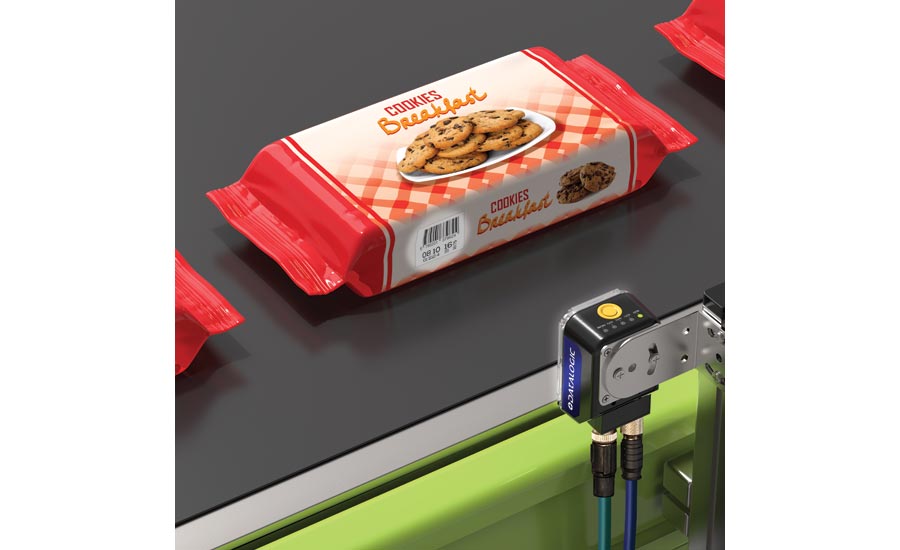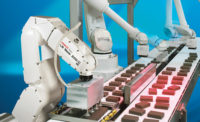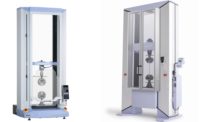In the dark ages before the prevalence of LED lighting choices, shop floors had to rely on consumer lighting options, like fluorescent and incandescent bulbs, or later, through xenon bulbs concentrated through fiber optics, according to Bradley Weber, Datalogic’s application engineering leader and industry product specialist for manufacturing.
Today, LEDs shine light on nearly every machine vision application.
Quality spoke more with Weber about the basics behind LED lighting, and what he expects to see in the future.
Quality: What are the standard lighting approaches used with machine vision?
Bradley Weber: We generally talk about six different main ways to provide light to the part. The first one is bright field illumination. You can imagine a ring of light very close to the camera, looking straight down on the object. That tends to be the cheap and dirty way. The lights shine down on the object and lights up the entire field of view of the image.
Then you have dark field illumination. It is where the camera is looking down at the object, but the lighting is coming in from the very lowest angles. You can think of the part as the horizon, and the lights coming in right above the horizon. The light skims across the product, and anything that has a bump in to the product, or a bump out of the product, gets highlighted because of the skimming technique at that low angle.
Then there’s what we call coaxial lighting. Where again, if the camera is looking straight down at the object, light is coming in straight at a perpendicular, 90 degree angle from the camera, it hits a 50 percent mirror and shines in-line with the camera. So now what happens is, all the light that’s going straight down and hitting a flat surface will shine directly back up at the camera. So again, if it’s going straight down it will come straight back up. And now anything flat will be bright and anything not flat will be dark, because if it hits the surface and is angled, then the light shoots away from the camera.

A 100% verification of date, lot codes and code quality can be accomplished with machine vision at extremely high rates of speed featuring using an ultra-compact smart camera. Source: Datalogic
The other common one is what we call a “cloudy day illuminator,” or a diffuse dome. You can think of it as a big bowl with a hole in the middle. The bowl is sitting upside down, so the camera is looking through the hole, and then the light is shining up into the bowl and the light scatters in every direction. So if you’ve ever been outside on a very cloudy but sunny day, everything is bright and lit up, but there are no shadows, because light is coming from every direction. The cloud is diffusing and dispersing the light all over the place, so there are no real shadows, but it’s still bright out. And that’s the same thing here.
Another method is backlighting. It uses a nice flat diffuse light. But you can think of that light as being behind the part, so the camera is looking down on the part, and on the back of the part is the light. So where there is no part, it is white, and where there is a part, it is black. That way you get very clear edges. And that’s very common when you’re talking about measurement applications.
The last one is what we call structured light. This is where a laser line is projected down on the part. Let’s say you have a black O-ring on a black plastic part. Now all that black absorbs all the light, and you have to create a line. If the O-ring is there, the line will be in a certain position, and if the O-ring is missing, that line is going to be up against the black part, and then you’ll know it’s missing. And now you can inspect a black-on-black part.
Quality: Has LED technology changed in recent years?
Bradley Weber: They’re getting better at the specific wavelengths that they’re able to generate. So you’re not kind of like, “Hey, here’s this kind of blue.” You can start getting into “Hey, we’ve got different shades of it, if need be.”
They’re also getting much, much brighter. It may be for a shorter pulse, but they’re able to drive those LEDs much brighter. What we always say in machine vision is you can almost never have enough light. There’s no such thing as too much light, because you’re able to then reduce the camera’s aperture to allow less light through the aperture and onto the imager. And that gives you a better depth of focus. There’s a wider range of items that can be in focus, because you’re reducing that aperture. But if you do that, you need more light.
QM: Why is it important to have a wide variety of wavelengths—or colors—available?
Weber: Wavelengths kind of highlight or negate a defect, or the item that you’re trying to find. When it comes to machine vision, you’re always trying to create contrasts. That’s the ultimate goal of any lighting situation, is to try and essentially highlight the item in the screen that you’re trying to find, and to negate all the background information. So, you’re trying to say what wavelength of light will make the defect really bright and white in the image and all the background information appear grey and dark. And that’s the ultimate goal, if you can do both types of things.
QM: How do you know what color light to use?
Weber: What I tell people is, go back to your art class, because that’s very much what’s happening here. So if you’ve got a red object in your field of view and you shine red light at it, all the red light going at that red object will be reflected. So anything red in the image is going to be very bright. And then if you look at that color wheel, and you look at what’s opposite red—the blues and greens—they’ll be very dark in the image with a red light, and vice versa. And if you shine it with blue, the blues will be white and the reds will be dark.
QM: What do you expect to see in the future?
Weber: For me, it’s how do we simplify the lighting options and make the light more versatile, so you can use the same light in many different applications, or use the same device in many different applications. Instead, right now, you have thousands of different lights to choose from because each application is its own thing. I can see some innovations now within LEDs, they have the red, the green, and the blue components all in one LED bulb. That way you’re able to kind of turn each of them on, or vary each of those bulb channels, in order to create the perfect wavelength that you want.







